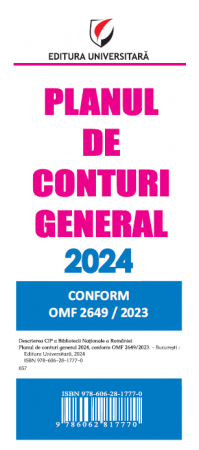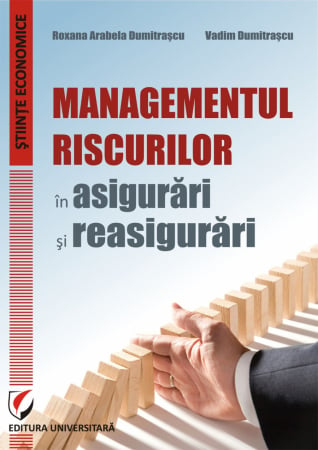Propuneri manuscrise: [email protected]: 0745 204 115
Urmărire comenzi Persoane fizice / Vânzări: 0745 200 357 / Comenzi Persoane juridice: 0721 722 783
ISBN: 978-606-591-358-5
DOI: 10.5682/9786065913585
Anul publicării: 2012
Ediția: I
Pagini: 217
Editura: Editura Universitară
Autor: Nirvana Popescu
- Descriere
- Download (1)
- Cuvânt înainte
- Autori
- Review-uri (0)
The technological innovation and business determinants produce major changes in how businesses cooperate and compete in the global marketplace. Companies are faced with the urgent need to become more customer focused, organized by client profile to provide the best service and remove processes that do not add value along the supply chain, customer or ultimate consumer benefit. That is why, nowadays, electronic commerce means not only buying and selling products and services over the Internet. Year by year it becomes more sophisticated and implies different intelligent technologies.
This book focuses on two aspects, as even the title suggests. On one hand it presents some basic concepts that represent the fundamentals of electronic commerce – the “basic” part. On the other hand it shows how Web Intelligence has improved this domain – the “more” part. Following this book, the reader can understand not only how an electronic trading system fully integrates IT technologies with business, but also some interesting implementation ideas based on fuzzy logic and neural networks that improve the systems, increasing the revenue of an electronic business.
-
Electronic commerce. Basics and more
Descarcă
The technological innovation and business determinants produce major changes in how businesses cooperate and compete in the global marketplace. At the same time, customers are aware of new technology services that they offer and become more demanding and less patient. Thus, companies are faced with the urgent need to become more customer focused, organized by client profile to provide the best service and remove processes that do not add value along the supply chain, customer or ultimate consumer benefit. That is why, nowadays, electronic commerce means not only buying and selling products and services over the Internet. Year by year it becomes more sophisticated and implies different intelligent technologies.
This book focuses on two aspects, as even the title suggests. On one hand it presents some basic concepts that represent the fundamentals of electronic commerce – the “basic” part. On the other hand it shows how Web Intelligence has improved this domain – the “more” part. Following this book, the reader can understand not only how an electronic trading system fully integrates IT technologies with business, but also some interesting implementation ideas based on fuzzy logic and neural networks that improve the systems, increasing the revenue of an electronic business.
The book is structured into six chapters. The first one is called “Concepts” and provides the basic notions related to e-business. The e-commerce models are discussed here emphasizing the idea that e-commerce is an integral part of the business strategy. Also, the chapter presents different specific architectures.
The second chapter, “Security of electronic commerce systems”, focuses on the security aspects of the commercial transactions over the Internet. Companies are increasingly looking to securely identify individuals who access their services, both on the Internet and offline. That is why the basic requirements for conducting commerce include confidentiality, integrity, authentication, authorization, assurance and privacy. Different technologies for access security are presented and modern-day cryptographic algorithms are discussed. One example is U-Prove Technology which is one of the most recent encryption technology proposed by Microsoft and launched in 2010.
The third chapter, “Electronic Payment Systems” presents some technological solutions for providing confidentiality, integrity and authentication of online financial transactions. For example the authentication can be accomplished using a digital signature, but other problem can arise when implanting a complete system that respects all three principles, as it will be seen in this chapter.
In order to fulfill all the business needs, the development of an e-commerce application starts with choosing the best solution for implementing it. There are a lot of platforms that can be used and the fourth chapter presents the most important ones. Microsoft Commerce Server 2009 is a useful solution for complex e-commerce applications and for this reason the entire chapter five is dedicated to the systems integrated in this powerful platform that provides facilities for any type of online shopping, personalized in any environment that uses Web technology. The site based on it allows easy navigation and the buyer loyalty is encouraged.
The sixth chapter, “Neuro-Fuzzy Systems and E-Commerce – an intelligent approach”, focuses on some intelligent solutions based on the fuzzy set theory and neural networks. In the last years of the electronic commerce some researchers brought interesting implementation ideas based on neuro-fuzzy intelligence, facing the challenge of designing systems that can handle the uncertainty of customers’ shopping behaviors and learning from them.
Being a combination of fundamental concepts and very new intelligent solutions in electronic commerce, this book can be useful to students, to e-commerce developers and to researchers in this domain that understand the importance to improve e-commerce systems by using certain intelligent techniques to filter the information and present only those products that fit the customers’ needs, increasing the business efficiency.

6359.png)
![Electronic commerce. Basics and more - Nirvana Popescu [1] Electronic commerce. Basics and more - Nirvana Popescu [1]](https://gomagcdn.ro/domains/editurauniversitara.ro/files/product/large/electronic-commerce-basics-and-more-1761-40050.jpg)














